|
AUGUST 2013
| ||||||||||||||||||||||||||||||||
|
Daryl Haggard, CIERA Postdoctoral Fellow, has contributed to the study of our Galaxys central black hole in Dissecting X-rayEmitting Gas Around the Center of Our Galaxy, a paper recently published in Science Magazine. Daryl is a co-author on this article, which examines X-ray emission from the Milky Ways central supermassive black hole (the group was led by Daniel Wang, who was previously a Lindheimer Postdoctoral Fellow at Northwestern; he now works at University of Massachusetts, Amherst). The group showed that, counterintuitively, most of the X-ray emitting gas actually escapes the gravity of that massive central object. The article was also reviewed in a "Perspectives" piece in the same issue. | ||||||||||||||||||||||||||||||||
|
Garfield Park Conservatory is hosting a free “Public Practice Evening” on Wednesday August 21st 6-9pm. The event encourages guests to practice their singing in public, with other groups, and to enjoy a night under the stars with amateur astronomers and telescopes. In addition, CIERA Postdocs will join in to answer questions about the night sky, along with volunteers from the Adler Planetarium. | ||||||||||||||||||||||||||||||||
| ||||||||||||||||||||||||||||||||
| ||||||||||||||||||||||||||||||||
|
Six of CIERA's Reach for the Stars teachers and graduate fellows were in Springfield, Illinois, on Friday August 9th to run a one-day computational modeling workshop for middle and high school teachers. The group was invited to give this workshop to share the materials they have developed as part of CIERAs NSF GK-12 program. | ||||||||||||||||||||||||||||||||
Northwestern University has joined The Physics Teacher Education Coalition (PTEC). PTEC is a network of institutions committed to improving the education of future physics and physical science teachers. CIERA played a large roll in this nomination due to the groups Computing Education for the 21st Century project and its GK12 program Reach for the Stars. | ||||||||||||||||||||||||||||||||
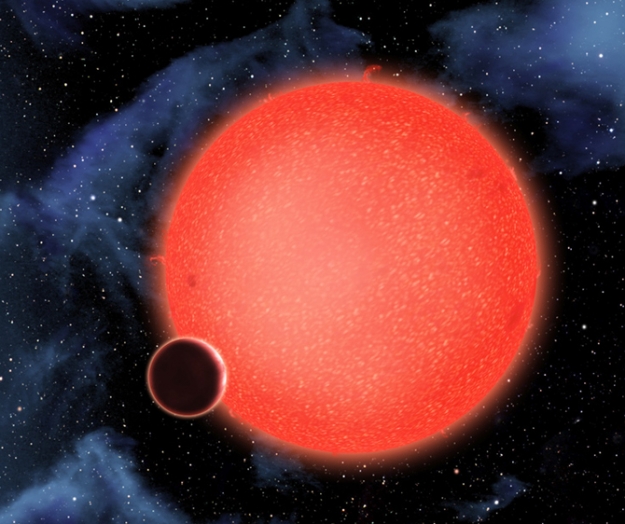 Postdoctoral Fellow Cowan Interviewed on Finding Life on Other Planets
Postdoctoral Fellow Cowan Interviewed on Finding Life on Other Planets
Technology-news website, DVICE, interviewed CIERA postdoctoral fellow Cowan in their article "What's the most likely way we'll find life on other planets?" The article discards Hollywood's idea of extraterrestrial encounters and discusses theories that scientists have about looking for signs of life on exoplanets. Features astronomers look for include: a thick protective atmosphere, a solid surface, non-extreme temperatures and an infrared glow created by waste energy from life forms. | ||||||||||||||||||||||||||||||||
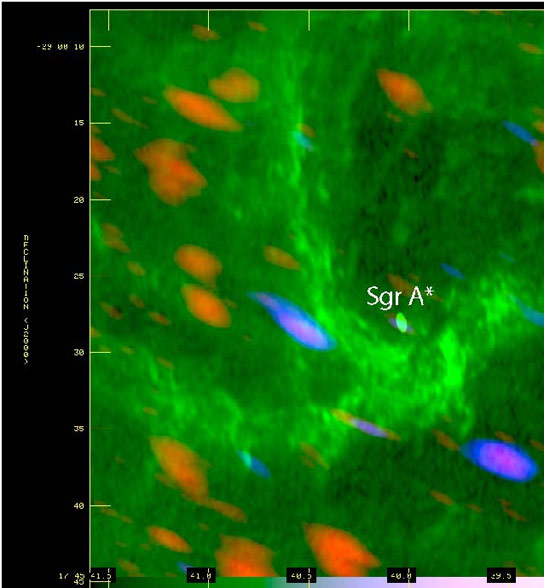 DePaul student writes about Farhad Yusef-Zadehs Research on Young Star Formation
DePaul student writes about Farhad Yusef-Zadehs Research on Young Star Formation
Michelle M. Hunter, graduate student in Writing and Publishing at DePaul University, interviewed CIERAs Farhad Yusef-Zadeh and wrote an article about his research, focusing on star formation in the hostile environment near the Supermassive Black Hole at the Galactic Center. Yusef-Zadeh theorizes, that while black holes have the ability to stretch a star-forming-cloud apart in one direction, they can also squeeze the cloud in another direction and actually create a star. This theory continues to gain favor over the previous theory that stars form elsewhere and later migrate near the black hole. | ||||||||||||||||||||||||||||||||
 Former NU Graduate Student, Marina Damiano, Credits her Success to Ready, Set, Go
Former NU Graduate Student, Marina Damiano, Credits her Success to Ready, Set, Go
In a recent online article in The PreScouter Journal Marina Damiano describes how her time with Ready, Set, Go (RSG) gave her the necessary skills to obtain her current position in scientific communications at a business-to-business life sciences marketing agency. The RSG program, directed by Michelle Paulsen and supported by CIERA's GK12 program and Northwestern's Graduate School, focuses on the three Cs of presentations: confidence, clarity, and connection. These skills, along with Damiano's Ph. D. in chemistry, have allowed her to craft her ideal career. Northwestern University's coverage of this story can be found in Northwestern University News. | ||||||||||||||||||||||||||||||||
 Vicky Kalogera addresses the mystery of black hole masses in 'Sky and Telescope' Magazine
Vicky Kalogera addresses the mystery of black hole masses in 'Sky and Telescope' Magazine
'What keeps you up at night?' That's the kind of question that Sky & Telescope magazine asked top astronomers for its special edition magazine: 'Astronomy's 60 Greatest Mysteries'. CIERA Director Vicky Kalogera's article addressed the unanswered question of "How light or heavy can a black hole be?". In the article, she discusses ongoing research to understand the upper and lower bounds of the mass of black holes. Find the full article in Sky and Telescope. | ||||||||||||||||||||||||||||||||
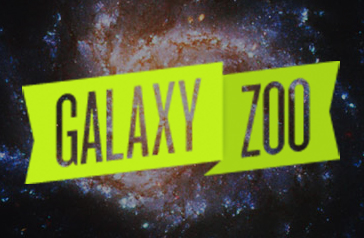 CIERA Postdoctotal Fellow Trouille takes Citizen Science to the Next Level!
CIERA Postdoctotal Fellow Trouille takes Citizen Science to the Next Level!
Galaxy Zoo and other Zooniverse projects have given thousands the opportunity to contribute to scientific research. Its time to take the role of volunteers to the next level. Dr. Laura Trouille, CIERA Fellow and Astronomer at the Adler Planetarium, is leading a new citizen science project, Galaxy Zoo Quench, which provides the opportunity to take part in the ENTIRE scientific process everything from classifying galaxies to analyzing results to collaborating with astronomers to writing a scientific article!
| ||||||||||||||||||||||||||||||||
 CIERA Postdoctotal Fellow Trouille gives Astronomy Talk for the Skokie Valley Astronomers
CIERA Postdoctotal Fellow Trouille gives Astronomy Talk for the Skokie Valley Astronomers
Friday, July 12th, Dr. Laura Trouille will give the astronomy talk for the Skokie Valley Astronomers in Deerfield, IL. The talk is titled, "The Monster's Fiery Breath: Supermassive Black Holes in Distant Galaxies". Laura is a CIERA Fellow & Astronomer at the Adler Planetarium.
| ||||||||||||||||||||||||||||||||
 Study on Cloud Behavior Doubles Number of Potentially Habitable Planets
Study on Cloud Behavior Doubles Number of Potentially Habitable Planets
CIERA Postdoctoral Fellow Nicolas Cowan and University of Chicago researchers Jun Yang & Dorian Abbot have published a study in Astrophysical Journal Letters that could mean we have underestimated the number of Earth-like planets in the Galaxy. This study calculates the influence of cloud behavior on the climate in planets orbiting red dwarfs, the most common type of stars in the universe. Based on their findings, they have doubled the number of potential habitable planets, meaning that in the Milky Way galaxy alone there may be 60 billion planets orbiting red dwarf stars in the habitable zone. You can read the full article on Northwesterns website. The paper can also be found online. This work was also mentioned in: The Economist | ||||||||||||||||||||||||||||||||
| ||||||||||||||||||||||||||||||||
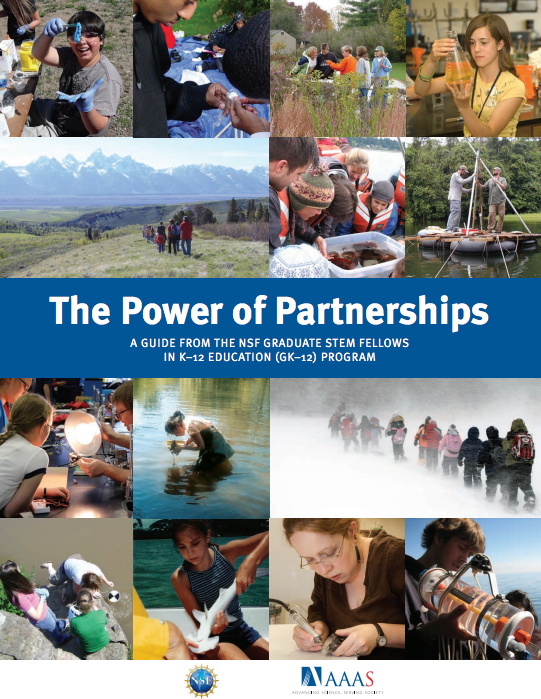 Reach for the Stars participants contribute to recently released
Reach for the Stars participants contribute to recently released The Power of Partnerships: A Guide from the NSF GK-12 Program Reach for the Stars participants Michelle Paulsen (Program Director) and Ami LeFevre (Teacher Fellow) contributed to the writing of The Power of Partnerships: A Guide from the NSF GK-12 Program. This guide, compiled by the National Science Foundation, provides effective practices for creating STEM based projects and programs. K-12 teachers and administrators will be able to turn to this guide as a reference point for creating their own GK-12 science, technology, engineering, and mathematics programs. The National Science Foundation gathers information from across the country to capture the knowledge and experiences from more than 10,000 graduate students, 1,000 principal investigators (university faculty), 300 project evaluators, and 12,000 K12 teachers. Michelle Paulsen co-authored Chapter 9, entitled "Evaluating Projects". Ami LeFevre contributed to Chapter 3, entitled "Effective Recruitment and Selection Strategies for GK-12 Fellows and Teachers". Additionally, a featured item on Congresswoman Jan Schakowsky's visit to Northwestern's appears in Chapter 10. The complete guide is available online. | ||||||||||||||||||||||||||||||||
 CIERA Postdoctotal Fellow Valsecchi Helps Hack Chicago Food Deserts
CIERA Postdoctotal Fellow Valsecchi Helps Hack Chicago Food Deserts
The National Day of Civic Hacking took place on the 1st and 2nd of June, 2013, in major cities throughout the United States. Chicago citizens, software developers, and entrepreneurs gathered at the Adler Planetarium to develop solutions to the challenges faced by our local neighborhoods, and our cities, states and country. CIERA Postdoctoral Fellow Francesca Valsecchi joined a group studying Chicago Food Deserts: areas where youth have trouble finding fresh foods in Chicago, particularly on the South and West sides of the city. One of the most exciting solutions the group found was Fresh Moves: a bus that acts as a mobile produce store which drives out to the food-desert areas. | ||||||||||||||||||||||||||||||||
|
| ||||||||||||||||||||||||||||||||
 Nearly 70 Chicago-area Student Research Projects Featured at Northwestern
Nearly 70 Chicago-area Student Research Projects Featured at Northwestern
CIERA's Reach for the Stars contributed to the 6th Annual Northwestern University High School Project Showcase on May 20, 2013. This event was hosted by The School of Education and Social Policys Office of STEM Education Partnerships (OSEP) and took place in the Norris University Center as part of Northwestern Universitys Undergraduate Research and Arts Exposition. Throughout the day nearly 70 Chicago-area high school students showcased posters of their research projects. The students each created their projects as part of the project-based math or science curriculum at their school or through an independent student research course or club. Some even created them as an entirely independent project. Scientists and professionals from Northwestern adjudicated projects; the event wrapped up with an awards ceremony. The winners were Barrett McCabe for The Effects of a Hydroponics System on the Growth Rate of Tanacetum cinerariifoium in Comparison to Traditional Soil Agriculture in life science; Sean Hickey for The Use of Activated Sludge Process in the Bioremediation of Heavy Metal Contamination in Drinking Water in environmental science; Connor Kotte for Variations in the Duration of Sleep in Danio rerio in Response to Changes in Melatonin Levels in human biology; and Dekonti Davies from Walter Payton College Preparatory High School for Trench Etching in MOSFETs in physical science. Winners in the two curriculum project categories were Leandro Padilla for the critter project and Jessica Molloy-Garcia, Richard Guzman, Carlos Anguiano, Mari Hernandez for the Florida school project.This showcase has been an important component of Northwestern's, OSEP's, and CIERA's goal to encourage students to explore hands-on, inquiry-based STEM learning. Learn more about the event here. | ||||||||||||||||||||||||||||||||
 "Computational Thinking and Mathematical Modeling Engages CPS Teachers
"Computational Thinking and Mathematical Modeling Engages CPS Teachers
On May 13th, Reach for the Stars held Computational Thinking and Mathematical Modeling, a workshop that drew 35 middle and high school teachers and administrators from across the Chicago Public School District. This free, all-day event addressed questions such as: What are Computational Thinking and Mathematical Modeling? How are these skills utilized by university researchers? How can they be taught as part of the existing high school science and mathematics curricula? Are they already being taught? These questions were explored by speakers from Reach for the Stars, Net Logo and CT-STEM who specialize in a variety of areas including Astronomy, Physics, Biology, Chemistry, Mathematics, Physical Science, Earth Science and Computer Science. The workshop included presentations on the role Computational Thinking and Mathematical Modeling play in the Next Generation Science Standards, and break-out sessions where participants had the opportunity to choose from an assortment of small group presentations. Attendees left with a new set of ideas and tools with-which they can more effectively teach students various math and sciences. | ||||||||||||||||||||||||||||||||
 CIERA Spring Interdisciplinary Colloquium 2013
CIERA Spring Interdisciplinary Colloquium 2013
CIERA's 2013 Spring Interdisciplinary Colloquium took place on May 6th, featuring Dr. Tim Slater (University of Wyoming Excellence in Higher Education Endowed Chair of Science Education). In his talk "Are You Really Teaching If No One is Learning? Impact of Discipline-based Education Research", Dr. Slater presented collaborative learning approaches and innovative classroom instructional materials for introductory science courses.
| ||||||||||||||||||||||||||||||||
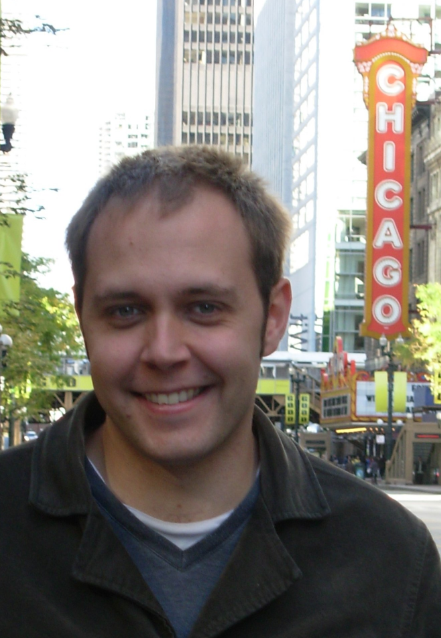 CIERA Fellow Adrian Barker hired as a Research Associate at DAMTP, Cambridge
CIERA Fellow Adrian Barker hired as a Research Associate at DAMTP, Cambridge
CIERA has been lucky to host Dr. Adrian Barker as a Postdoctoral Fellow for the past two years, benefiting from his expertise in stellar and planetary hydrodynamics. But this past quarter, Adrian was offered and accepted a Research Associate position in Astrophysics at the Department of Applied Mathematics and Theoretical Physics at the University of Cambridge. Adrian will be with us until late August; when he starts in Cambridge (in early October), he will work with Drs Latter and Ogilvie, and Prof Papaloizou. | ||||||||||||||||||||||||||||||||
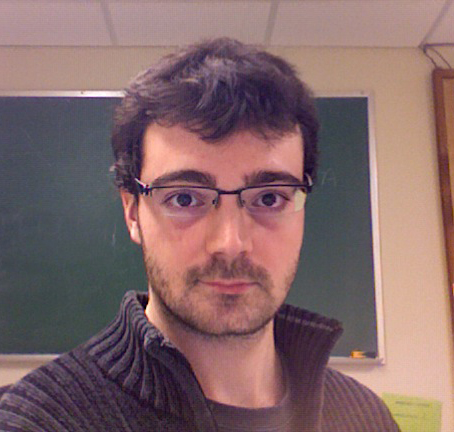 Vivien Raymond Wins International Stefano Braccini Prize for His Thesis
Vivien Raymond Wins International Stefano Braccini Prize for His Thesis
Every year, the gravitational-wave community gives the Stefano Braccini Prize for the best thesis on gravitational waves and related subjects (either theoretical or experimental). This year was exceptional in that two prizes were given; one of those prizes was awarded to our own Vivien Raymond for his thesis "Parameter Estimation Using Markov Chain Monte Carlo Methods for Gravitational Waves from Spinning Inspirals of Compact Objects"; Vivien was a student of Professor Vicky Kalogera. He is now the Richard Chase Tolman Postdoctoral Scholar in Experimental Physics at the California Institute of Technology. | ||||||||||||||||||||||||||||||||
 CIERA Begins Its Relocation to the Tech Institute's F-Wing
CIERA Begins Its Relocation to the Tech Institute's F-Wing
Renovations to the Technological Institute's F-Wing have reached another milestone: Professors Vicky Kalogera and Fred Rasio, along with some CIERA postdocs, the Astrophysical Journal-Letters Editorial staff, and the CIERA staff, have moved from Dearborn Observatory to newly renovated offices in the F-Wing; the new offices will all be roughly located around F-237. Please drop by and see our new space! Besides Professors Kalogera and Rasio, CIERA post-docs Will Farr, Jason Steffen, Nick Cowan, Nate Kaib, Aaron Geller, and Tyson Littenberg have relocated to F-Wing; they will shortly be joined by new Research Associate Professor Shane Larson. Staff members Janet Howe, Rachael Lunney, and John Everett have also made the transition.
| ||||||||||||||||||||||||||||||||
|
|
||||||||||||||||||||||||||||||||
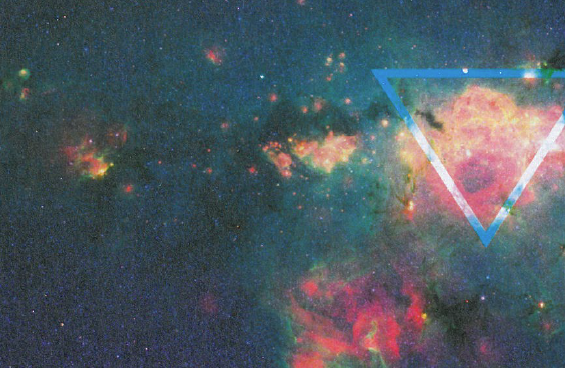 Farhad Yusef-Zadeh and Postdoctoral Fellow Daryl Haggard Quoted in New Scientist magazine
Farhad Yusef-Zadeh and Postdoctoral Fellow Daryl Haggard Quoted in New Scientist magazine
Both CIERA faculty member Farhad Yusef-Zadeh and Postdoctoral Fellow Daryl Haggard were interviewed for the article Heart on fire: Our galaxy's black hole is set to blow in the April 27th edition of New Scientist magazine. Yusef-Zadeh and Haggard are closely observing a gas cloud that is passing dangerously close to the massive black hole at the center of our galaxy: a once-in-a-lifetime event. The gas cloud will encounter the black hole later this year and there are many different theories about exactly what will happen as it gets closer. | ||||||||||||||||||||||||||||||||
 CIERAs Meagan Morscher, Laura Trouille and John Everett participate in Family Science Night
CIERAs Meagan Morscher, Laura Trouille and John Everett participate in Family Science Night
Family Science Night took place on April 25th at West Ridge Elementary School and focused on the theme "Going Green". Participants explored science through presentations, experiments and games. CIERAs Meagan Morscher (Grad Student), Laura Trouille (Postdoctoral Fellow) and John Everett (Assistant Director of Operations) worked with a small group from the Adler Planetarium Zooniverse project. Morscher, Trouille, and Everett demonstrated planetary orbits, the relative sizes of the planets, and the order and spacing of our Solar Systems planets with a large wooden orrery and two simple games.
| ||||||||||||||||||||||||||||||||
 Postdoctoral Fellow Daryl Haggard Advocates for STEM on Capitol Hill
Postdoctoral Fellow Daryl Haggard Advocates for STEM on Capitol Hill
On April 15, 2013, CIERA Fellow Daryl Haggard spent the day on Capitol Hill with her colleagues from the AAS's High Energy Astrophysics Division. The group talked to members of Congress in support of student research in Science, Technology, Engineering, and Mathematics (STEM) in general, and in support of astronomy in particular. Astronomers stressed how NASA-, NSF-, DOE- and DOD-funded research not only helps us understand the universe, but helps to educate & inspire the public. Astronomy serves as a "gateway science" that introduces students to STEM, and helps to inspire and train the next generation of a broad range of scientists and engineers. | ||||||||||||||||||||||||||||||||
 Breaking Bad: From Bench to Broadcast: Experience as a Science Advisor Donna Nelson
Breaking Bad: From Bench to Broadcast: Experience as a Science Advisor Donna Nelson
On April 19, 2013 Donna Nelson, science advisor for the popular TV show Breaking Bad visited Northwestern to give a lecture entitled, Breaking Bad: From Bench to Broadcast: Experience as a Science Advisor. In this lecture, Nelson spoke about her passion to promote accurate depictions of science and scientists. She shared stories of her experience working on the series and the joy she finds in being the liaison between the science and entertainment industries. Though she admits her job, at times, includes simplifying certain words to help actors with memorization, Nelson is committed to providing accurate scientific details. While Breaking Bad is in its final season Nelson intends to continue working with he entertainment industry alongside her work as a scientist.
| ||||||||||||||||||||||||||||||||
 Kristin Labby and Michelle Paulsen speak at ACS
Kristin Labby and Michelle Paulsen speak at ACS
At this years meeting of the American Chemical Society, Michelle Paulsen, program director for Northwesterns GK12 program, and Kristin Labby, GK12 alumna, gave invited talks entitled Reaching for the stars: Forming and maintaining partnerships between universities, schools, and the community and Introducing medicinal chemistry research to middle school students: a multi-faceted approach from a GK-12 experience.
| ||||||||||||||||||||||||||||||||
 Stars forming close to the Milky Way's central black hole
Stars forming close to the Milky Way's central black hole
"An image showing the distribution of hot gas (here, in green) around our Milky Way's central black hole, labeled "Sgr A*". The red and blue regions, revealed in new data from ALMA, show molecules usually associated with star formation; the blue emission is especially quick moving gas, again characteristic of star formation." Astronomers are still trying to understand how stars are born, but it seems that stars are fairly picky about where they form -- the matter cannot be too hot, or moving too quickly, for instance. Therefore, at the very center of our Galaxy, where mass is being pulled around by the Milky Way's central, supermassive black hole (a black hole with a mass about 4 million times that of the Sun), you might expect that forming stars would be very difficult. And, up until Friday, many astronomers would have agreed with you. However, Northwestern & CIERA Professor Farhad Yusef-Zadeh, along with Adjunct Associate Professor Doug Roberts, graduate student Marc Royster, and colleagues from across the world, have discovered the tell-tale signs of star formation very close to the Milky Way's central black hole. They have used an extraordinary new telescope in Chile (called ALMA, for the Atacama Large Millimeter/submillimeter Array) to trace the signature of molecules commonly found when stars form, and have now discovered those molecules from gas clouds near the Milky Way's central black hole. This discovery will not only help us understand the conditions under which stars can form, but also help us learn more about the environment around the central supermassive black hole in our Galaxy. |
|
|||||||||||||||||||||||||||||||
 Laura Fissel to join CIERA as Postdoctoral Fellow
Laura Fissel to join CIERA as Postdoctoral Fellow
Laura Fissel will join Northwestern in 2013 as the newest CIERA Postdoctoral Fellow. Laura is currently working towards her PhD at the University of Toronto, where she contributed to the development of BLASTpol, a balloon borne submillimeter telescope used to map magnetic fields in star forming clouds. At Northwestern, Laura will continue her star formation research in collaboration with Professor Giles Novak and his research group. In addition to her BLASTpol data, Laura will make use of radio observations obtained at various facilities in Australia and Chile, as well as data from the HAWC+ instrument for SOFIA. She will also help build the new, upgraded version of BLASTpol that will be launched from Antarctica in 2016. | ||||||||||||||||||||||||||||||||
| ||||||||||||||||||||||||||||||||
|
||||||||||||||||||||||||||||||||
 CIERA Fourth Annual Public Lecture,
CIERA Fourth Annual Public Lecture,"Science@NASA" by Dr. John Grunsfeld: a great success Dr. John M. Grunsfeld, former astronaut and current Associate Administrator for NASA's Science Mission Directorate, gave an exciting talk entitled "Science@NASA". The lecture took place on Tuesday, February 19 in the Technological Institute, Ryan Family Auditorium. Dr. Grunsfeld talked about his flights as a shuttle astronaut, including repair missions to the Hubble Telescope. He also addressed current and future missions at NASA, and the possibilities of exciting upcoming discoveries. For more information about the content of the talk, click hereAlso see: Click on any of the photos of the lecture below for a larger picture
| ||||||||||||||||||||||||||||||||
 Dr. Aaron Geller was awarded an
Dr. Aaron Geller was awarded anNSF Astronomy and Astrophysics Postdoctoral Fellowship (AAPF) Congratulations to Dr. Aaron Geller, current Lindheimer Postdoctoral Fellow at Northwestern University, who was awarded an NSF Astronomy and Astrophysics Postdoctoral Fellowship (AAPF)! The AAPF award funds a three-year integrated program of independent research and education, which Dr. Geller will carry out at Northwestern in CIERA and the Department of Physics & Astronomy. The AAPF program is intended to recognize early-career investigators of significant potential and to provide them with experience in research and education that will establish them in positions of distinction and leadership in the community. Dr. Geller's research will focus on modeling the dynamical evolution of planetary systems in star clusters. For his education component, Dr. Geller will work with a GK12 graduate student fellow to develop and test high school curricular materials that are directly tied to his research on star clusters and exoplanets. | ||||||||||||||||||||||||||||||||
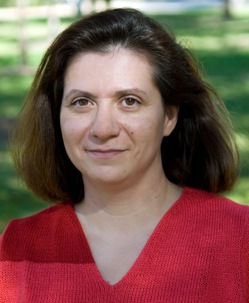 A Day with Northwestern 2013
A Day with Northwestern 2013
Join fellow alumni, friends, and current students for this all-day seminar featuring prominent faculty and alumni speaking on a variety of timely topics. Choose from 14 lectures to personalize your class schedule and enjoy engaging discussions with alumni and friends. 9:00am - 4:00pm Northwestern University Norris Center, 1999 Campus Drive Evanston, IL Open to the Northwestern community and the general public. Prof. Vicky Kalogera, E. O. Haven Professor of Physics & Astronomy and Director for CIERA, will be presenting in the afternoon session (1:45 - 2:45pm). NU Astronomy: Listening to Black Holes | ||||||||||||||||||||||||||||||||
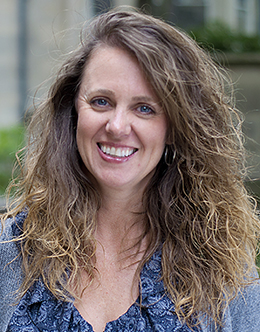 Michelle Paulsen named "Scientist of the Month"
Michelle Paulsen named "Scientist of the Month"by the Association for Women in Science Congratulations to Michelle Paulsen, named Scientist of the Month for February 2013 by the Association for Women in Science in Chicago! Michelle is the Director of Reach for the Stars, an NSF funded GK12 program that is a joint collaboration between CIERA and OSEP, the Office of STEM Education Partnerships. The article focuses on Michelle's work with GK-12, her enthusiasm for education, and her work to help increase the effectiveness of science communication through Ready, Set, Go, the TGS STEM Communication Fellowship program. Read about Michelle Paulsen and her work with education, science, and her contribution to the science community on the Association for Women in Science - Chicago website. | ||||||||||||||||||||||||||||||||
 New Method to Map Extrasolar Planets
New Method to Map Extrasolar Planetsfrom CIERA Fellow, Dr. Nick Cowan Astronomers have discovered almost 860 exoplanets to date: planets of many different sizes, orbiting different kinds of stars, at a wide range of distances from their parent stars. But for the most part, the details of those worlds are unknown to us -- are those planets covered in ice, water, or land, or some mix of those? The planets are too far away to answer these questions by simply taking pictures of them, even using the most powerful telescopes we have. We need clever tools to tease out what these planets look like. CIERA Fellow Nick Cowan and Northwestern undergraduate Talia Strait have developed exactly this kind of tool. Presented at the Winter 2013 meeting of the American Astronomical Society, their technique uses reflected light to reconstruct the rough surface features of exoplanets. This method will help turn those exoplanets from data points into real worlds, allowing us to discover, for instance, how much of a planet is covered with oceans, or with land. For an overview of this method, please see a news story at Inside Science News Service website. | ||||||||||||||||||||||||||||||||
JANUARY 2013
|
||||||||||||||||||||||||||||||||
 Dr. Nick Cowan describes how we'll find
Dr. Nick Cowan describes how we'll findEarth-like climates on other worlds At the January 2013 meeting of the American Astronomical Society, astronomers working with NASA's Kepler spacecraft announced what may be the most Earth-like planet yet: the planet even orbits its parent star at just the right distance for water to exist on its surface. The detection of such a planet is very exciting, but what does the planet look like, and what would it be like to live there? To try to answer questions like these, we need to understand what the surface of the planet is like, and what its atmosphere is like. In a recent story on space.com, CIERA Fellow Nick Cowan describes this next step to understanding these planets: carefully watching them with large telescopes to tease out clues about water, land, and clouds on those worlds. | ||||||||||||||||||||||||||||||||
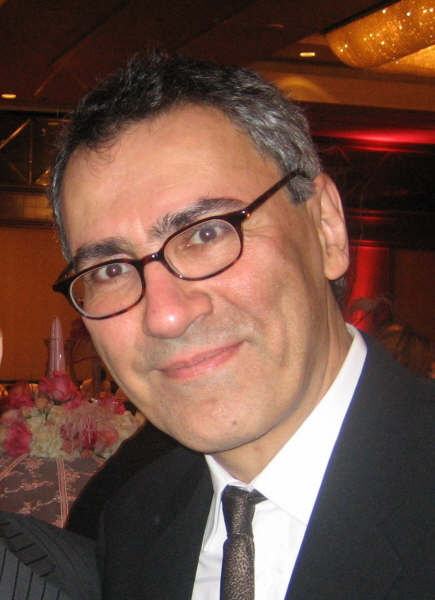 Prof. Farhad Yusef-Zadeh discovers new method
Prof. Farhad Yusef-Zadeh discovers new methodfor detecting clouds and stars in Galaxy's center Prof. Farhad Yusef-Zadeh has discovered a new method for detecting dusty clouds and stars in the center of our galaxy by taking an image using radio waves. He is the first to identify radio dark clouds and stars. Stars in the early and late phases of their evolution are shrouded by huge dusty envelopes in the form of dust and gas outflows. When you see these dark stars or clouds in radio wavelength images, it tells you something very interesting, Farhad said. We immediately know there is a cold gas cloud or dusty star mixing with a hot radiative medium and that an interaction is taking place. Knowing details of these clouds is important because the clouds can produce stars and also provide material for the growth of black holes. | ||||||||||||||||||||||||||||||||
 Dr. Daryl Haggard Elected to Help Lead
Dr. Daryl Haggard Elected to Help Leadthe High Energy Astrophysics Division Each year, the High Energy Astrophysics Division (HEAD) of the American Astronomical Society elects two of its members to its Executive Committee, which runs the Division and its meetings. In this year's election, CIERA Postdoctoral Fellow Daryl Haggard was elected to the Executive Committee, for a term of three years. In her work on that Committee, Daryl aims to draw early-career researchers to the Division, and to improve the connection between high-energy astrophysicists and those studying lower-energy phenomena. Congratulations Daryl! | ||||||||||||||||||||||||||||||||
 Dr. Nate Kaib's paper, "Planetary system disruption
Dr. Nate Kaib's paper, "Planetary system disruptionby Galactic perturbations to wide binary stars", published in Nature CIERA Postdoctoral fellow, Dr. Nate Kaib's paper, "Planetary system disruption by Galactic perturbations to wide binary stars", was published in Nature magazine. Here is the abstract for the paper: Nearly half the exoplanets found within binary star systems reside in very wide binaries with average stellar separations greater than 1,000 astronomical units (one astronomical unit (AU) being the EarthSun distance), yet the influence of such distant binary companions on planetary evolution remains largely unstudied. Unlike their tighter counterparts, the stellar orbits of wide binaries continually change under the influence of the Milky Ways tidal field and impulses from other passing stars. Here we report numerical simulations demonstrating that the variable nature of wide binary star orbits dramatically reshapes the planetary systems they host, typically billions of years after formation. Contrary to previous understanding2, wide binary companions may often strongly perturb planetary systems, triggering planetary ejections and increasing the orbital eccentricities of surviving planets. Although hitherto not recognized, orbits of giant exoplanets within wide binaries are statistically more eccentric than those around isolated stars. Both eccentricity distributions are well reproduced when we assume that isolated stars and wide binaries host similar planetary systems whose outermost giant planets are scattered beyond about 10 AU from their parent stars by early internal instabilities. Consequently, our results suggest that although wide binaries eventually remove the most distant planets from many planetary systems, most isolated giant exoplanet systems harbour additional distant, still undetected planets. You can learn about the research that went into this paper by Dr. Kaib and his team at Northwestern University News. Good Work Nate! | ||||||||||||||||||||||||||||||||
|
||||||||||||||||||||||||||||||||
 Dr. Will Farr accepts offer for a faculty position
Dr. Will Farr accepts offer for a faculty positionat the University of Birmingham, UK Dr. Will Farr, CIERA Postdoctoral Fellow, has accepted an offer for a Birmingham Fellowship at the University of Birmingham, UK. He will be taking up a faculty position as a Lecturer in the School of Physics and Astronomy beginning fall 2013. Congratulations Will! | ||||||||||||||||||||||||||||||||
 Debunking the December 21st Doomsday Myth
Debunking the December 21st Doomsday Myth
The stories are out there. December 21st, 2012 is the end of the world. Not true! Dr. Laura Trouille has put together a webpage with plenty of resources from a variety of respected organizations and individuals debunking this myth. Please visit her webpage, complete with articles and videos. Also this Thursday, December 20th, the Adler Planetarium will be hosting "Dark Starmageddon". Check it out! | ||||||||||||||||||||||||||||||||
 Dr. Francesca Valsecchi wins 'Young Star' award
Dr. Francesca Valsecchi wins 'Young Star' award
Dr. Francesca Valsecchi has been named a "Young Star" of the American Physical Society's Division of Astrophysics! Francesca has been selected for this early career recognition award in appreciation of her research on the interactions of stars in binary-star systems. For this award, she will give an invited talk as part of the Division of Astrophysics' 2013 Early Career Recognition Lectures at a special session of the 2013 April meeting of the American Physical Society. Francesca joined the Ph.D. program in the Department of Physics and Astronomy, working on high energy physics with Prof. Bruno Gobbi. One year after, she joined Prof. Vicky Kalogera's group in CIERA and began working on theoretical astrophysics. Francesca received her doctorate in September 2012. Her thesis was titled, "Compact Objects In Binary Systems: Formation and Evolution of X-ray Binaries and Tides in Double White Dwarfs". She is currently continuing her research at Northwestern University as a postdoctoral associate, working with Prof. Fred Rasio and Prof. Kalogera. Congratulations, Francesca! | ||||||||||||||||||||||||||||||||
 Why 'hot Jupiters' are cool
Why 'hot Jupiters' are cool
Dr. Nick Cowan and his team study "hot Jupiters", which are large gas planets light years away from Earth. By pairing up the astrophysical observations of "hot Jupiters" with geological research taking place on Earth, he hopes to provide new insight into our own climate. Nick recently sat down with Northwestern journalism students Meghan Leach and Stephanie Sunata, to discuss this research. The interview can be seen on Medill Reports Chicago.  | ||||||||||||||||||||||||||||||||
 Reach for the Stars
Reach for the Starsat Frederick Von Steuben Metropolitan Science Center Stephanie Sunata, a Medill Journalism student visited the Frederick Von Steuben Metropolitan Science Center, a CPS high school, to see Reach for the Stars in action. She came to see graduate fellow Madison Fitzpatrick (PhD candidate, Civil Engineering) introduce computational modeling tools to Aimee Karagiannis' environmental science class. | ||||||||||||||||||||||||||||||||
 Dr. Laura Trouille and Nick Lake interview
Dr. Laura Trouille and Nick Lake interviewDr. Mike Meyer, Lead Scientist for the NASA Mars Missions Dr. Laura Trouille (Northwestern University CIERA Fellow & Adler Planetarium Astronomer) and Nick Lake (Adler Educator) interviewed Dr. Mike Meyer, Lead Scientist for the NASA Mars Missions. Scientists and the public sent Laura questions to ask Dr. Meyer. You can listen to the podcast interview here
| ||||||||||||||||||||||||||||||||
|
||||||||||||||||||||||||||||||||
 "Computational Thinking" Important to Future Education
"Computational Thinking" Important to Future Education
Michelle Paulsen (Northwestern's Reach for the Stars Program Director) organized a 3 hour workshop to update Chicago-area teachers on the new 'Computational Thinking (CT) and Computational Modeling' components of the Next Generation Science Standards on November 17th. Laura Trouille, CIERA fellow and Adler Astronomer, was one of the panelists for the discussion hour of the event. Physics graduate student and Reach for the Stars fellow Scott Mayle, along with a number of other former and current Reach for the Stars fellows, presented their CT-SEM curricular materials during the final hour. For more information on the event, click here. For more information on Northwestern's Computational Thinking in STEM curricular materials and teacher professional development opportunities, click here. | ||||||||||||||||||||||||||||||||
 CIERA Fall Interdisciplinary Colloquium
CIERA Fall Interdisciplinary Colloquium
Prof. Alyssa Goodman from Harvard University delivered a talk on November 30th to a standing room only audience for the CIERA Fall 2012 colloquium. The talk was titled, "The Close Relationship between Heart Disease and Sea Monsters" (or, why good high-dimensional data visualization can solve almost any problem!) For more information about the talk, click hereYou can view the slideshow for Prof. Goodman's talk in .pdf, and in Keynote | ||||||||||||||||||||||||||||||||
 Computational Thinking and Mathematical Modeling:
Computational Thinking and Mathematical Modeling:A Workshop for High School Teachers and Administrators CIERA is excited to support and announce an upcoming workshop for high school math and science teachers and administrators. Workshop organizes have invited Prof. Vicky Kalogera and Dr. Laura Trouille to speak on a panel, sharing an overview of their research and work in astrophysics as well as education. In addition the workshop will introduce the computational modeling lessons that have been developed by Reach for the Stars teachers and graduate fellows. These lessons bring computational thinking and modeling into the traditional math and science curricula in ways that are aligned with the Next Generation Science Standards. Registration is available until November 16th, but space is limited. Workshop flyer here | ||||||||||||||||||||||||||||||||
 Dr. Laura Trouille accepts joint position between NU and Adler
Dr. Laura Trouille accepts joint position between NU and Adler
Dr. Laura Trouille has accepted a joint position between Northwestern University and the Adler Planetarium! She has already started working in that capacity, working half-time at CIERA (where she will continue both her research and outreach work, as a CIERA Fellow), and half-time at Adler. She will be working in Adler's education and outreach programs, as well as continuing her own research in AGN at Adler. So, if you are interested in volunteering at Adler, or have questions about Adler programs and visitors, or the connections between NU and Adler, Laura is an excellent person to ask. Congratulations, Laura! | ||||||||||||||||||||||||||||||||
 Ever want to ask an astronaut a question? Now's your chance!
Ever want to ask an astronaut a question? Now's your chance!
In celebration of the 40th anniversary of the Apollo mission, the Adler Planetarium is hosting a number of events, including interviews with Apollo astronauts Harrison Schmitt and Eugene Cernan. We're currently compiling possible questions to ask the astronauts, about spaceflight, being on the moon, the history and future of manned space exploration, etc. If you have questions for our Apollo astronauts that you'd love to hear them answer, please email them to Dr. Laura Trouille at l-trouille@northwestern.edu. All questions accepted, from serious to entertaining. | ||||||||||||||||||||||||||||||||
|
||||||||||||||||||||||||||||||||

Powerful Computer Cluster for use on Gravitational Wave Simulations to be Installed at Northwestern In October, Northwestern's Quest Supercomputer will get 1344 additional computer "cores" (computer processors) as well as 32 high-performance graphics cards for use in specialized numerical simulations. With all of this computing power comes 37 TB of new disk space: the computers and disk space will be used to explore gravitational-wave source simulations and data analysis. Undergraduate and graduate students will also be trained in high-performance computer on this new resource. This computer cluster comes to Northwestern as the result of a collaborative effort of many groups on campus. The group was led by Prof. Vicky Kalogera, included many faculty who are a part of CIERA (Profs. Alok Choudhary, Erik Luijten, Fred Rasio), and was made possible by the Northwestern University IT group (including past Associate Director for Research Computing Thomas Hauser and current Assoc. Director Joseph Paris), the Weinberg College of Arts and Sciences, the McCormick School of Engineering and Applied Science, the Vice President for Research at Northwestern, and the Departments of Electrical Engineering and Computer Science, Materials Science, Engineering Science, and Physics & Astronomy. | ||||||||||||||||||||||||||||||||
 Prof. Vicky Kalogera appointed to the Scientific Advisory Board
Prof. Vicky Kalogera appointed to the Scientific Advisory Boardfor the Max Planck Institute for Gravitational Physics! Prof. Vicky Kalogera was appointed as a member of the Scientific Advisory Board for the Max Planck Institute for Gravitational Physics in Potsdam, Germany. The Institutes scientific advisory and assessment Board is made up of internationally renowned physicists. The Board advises the President of the Max Planck Society (MPG) on how effectively the Directors are managing the work of the Institute. Their advice helps the Directors to establish priorities and improve their management. The Scientific Advisory Board is the main tool used by the MPG to evaluate its research institutes to ensure appropriate and effective development of funds. Every two years the members of the Board meet for several days to evaluate the Institute and to prepare a report to the President of the MPG. | ||||||||||||||||||||||||||||||||
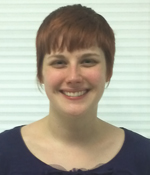 Welcome Rachael Lunney, CIERA's new Associate Research Administrator!
Welcome Rachael Lunney, CIERA's new Associate Research Administrator!
We are happy to announce that Rachael Lunney will be joining us as the new CIERA Associate Research Administrator, beginning October 17th. Rachael comes to us from the Biomedical Engineering Department, where she currently is the Research Study Coordinator. She manages and monitors large grants, spread out among several institutions. She has a solid background in finance and acccounting, and will be a wonderful addition to our team. Rachael will be overseeing CIERA finances, preparing monthly reports for all PIs, working with payroll and hiring, and will be instrumental in preparing new grant proposals. Please join us in welcoming Racheal to CIERA! | ||||||||||||||||||||||||||||||||
 Dr. Michael Smutko reelected to Student Government's Faculty Honor Roll
Dr. Michael Smutko reelected to Student Government's Faculty Honor Roll
In a campus-wide vote, Distinguished Senior Lecturer Michael Smutko has been elected by students to Northwestern University's Associated Student Government's 2012 Faculty Honor Roll. This marks the 5th year in a row that Dr. Smutko has received this honor and it is his 6th election overall. | ||||||||||||||||||||||||||||||||
|
||||||||||||||||||||||||||||||||
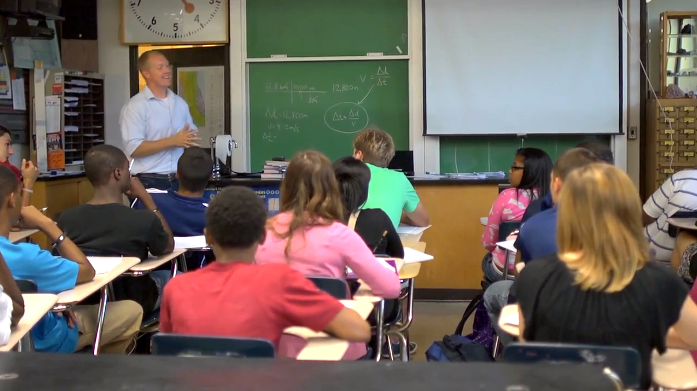 OSEP (in partnership with CIERA) & ETHS Win the 2012 Catalyst Award
OSEP (in partnership with CIERA) & ETHS Win the 2012 Catalyst Award
The Office of STEM Education Partnerships (OSEP) and the Evanston Township High School (ETHS) are the proud recipients of the 2012 Catalyst award, presented by the Evanston Chamber of Commerce at the 3rd annual Evanston MashUp. The award is given for stengthening the ties between Northwestern University and Evanston. CIERA and the Reach for the Stars GK-12 program are partners with OSEP, bringing the exciting STEM teaching and research being done here at Northwestern to K-12 teachers and students in Evanston and beyond. OSEP made a video which tells the story of the collaborative partnership between Northwestern University and Evanston Township High School (ETHS). You can watch the video by clicking HERE. Below are stills from the video:
| ||||||||||||||||||||||||||||||||
|



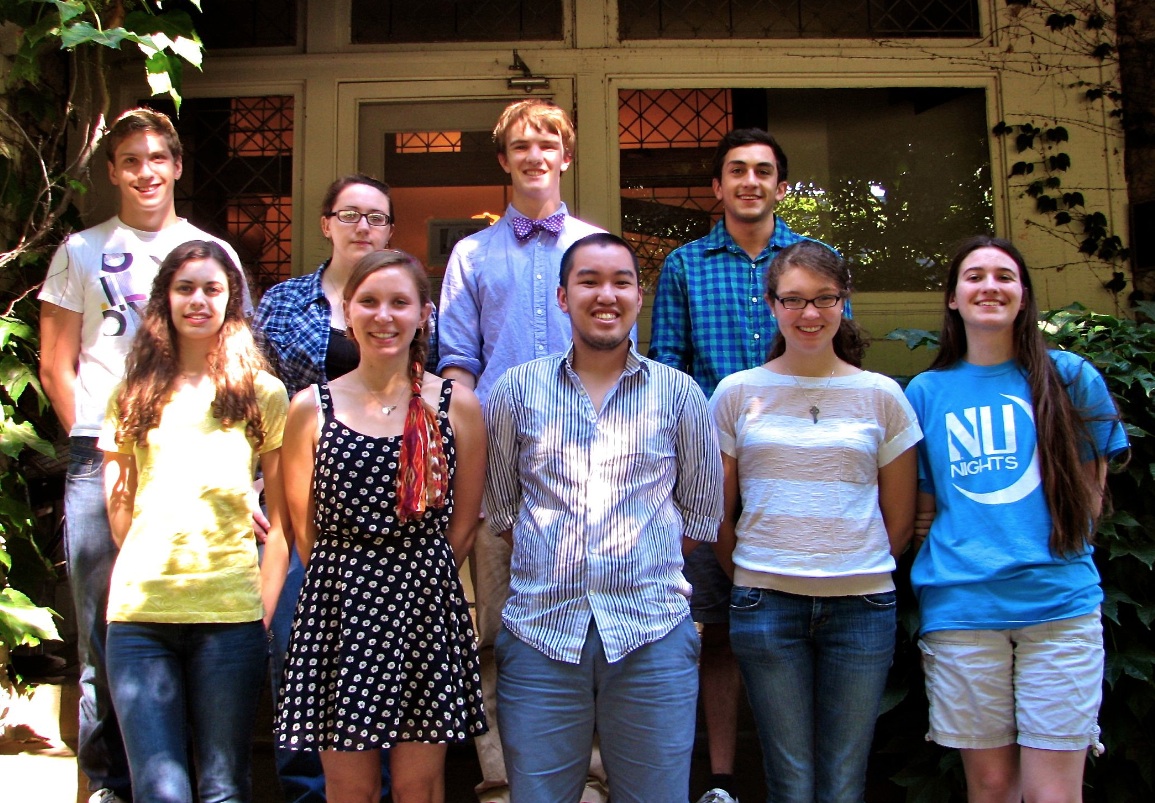



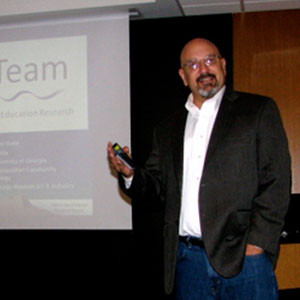
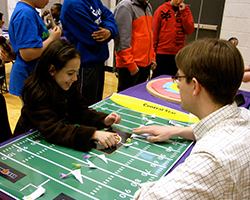


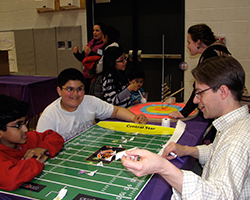




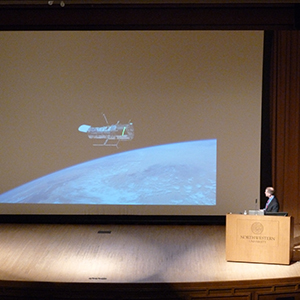
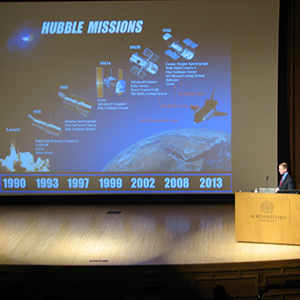
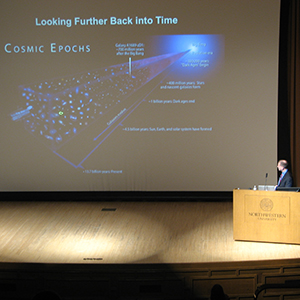
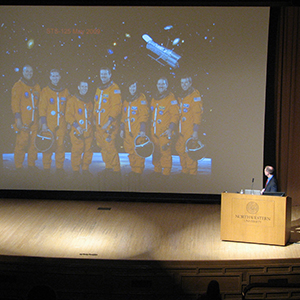


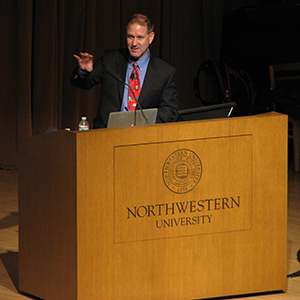
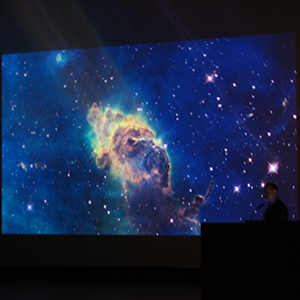
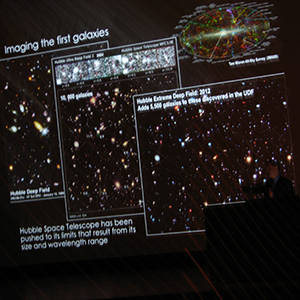
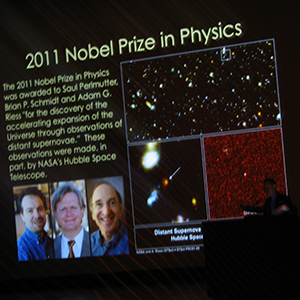
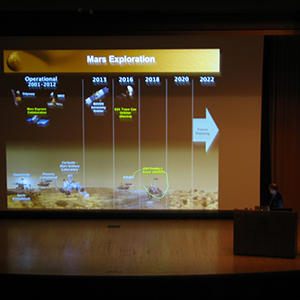


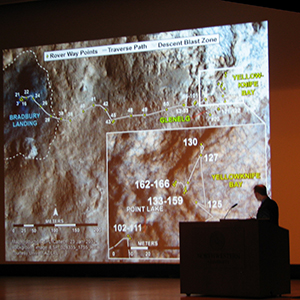
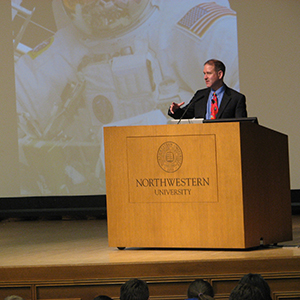
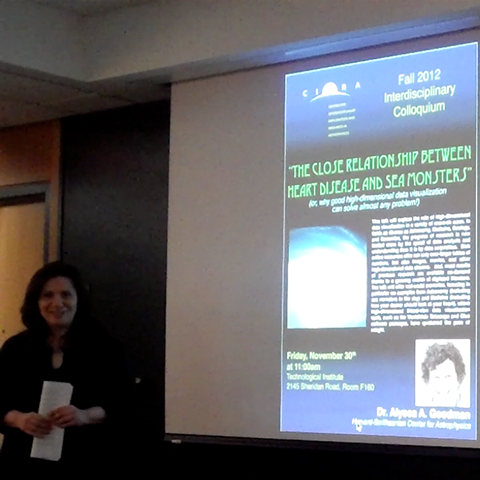
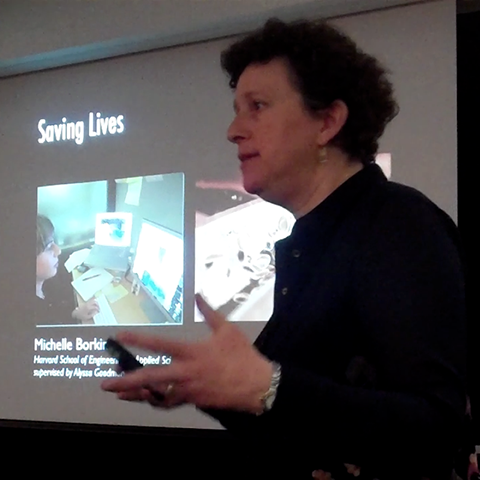

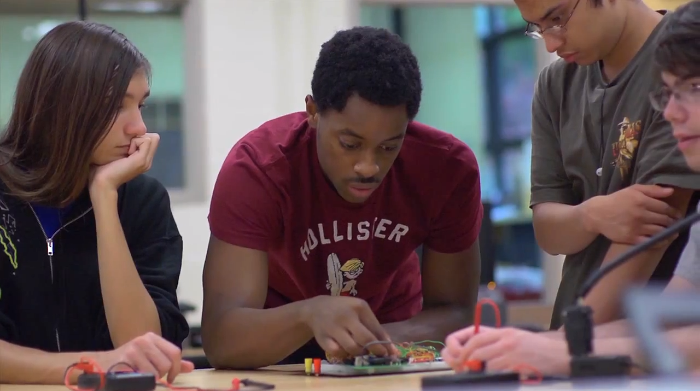


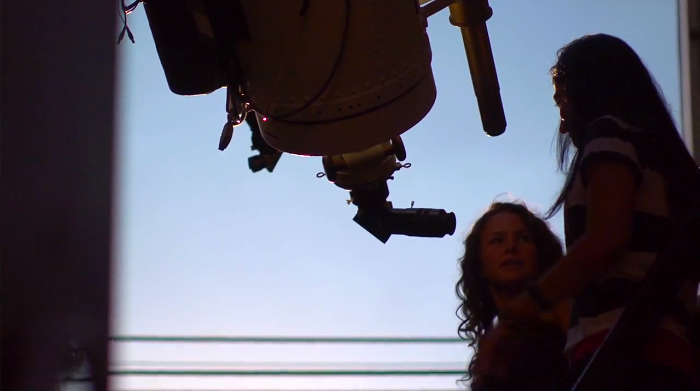
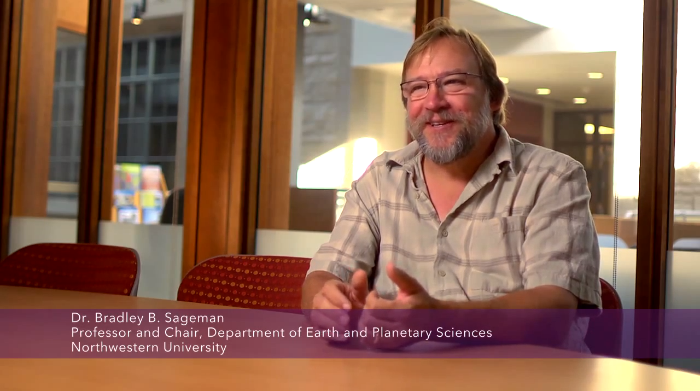
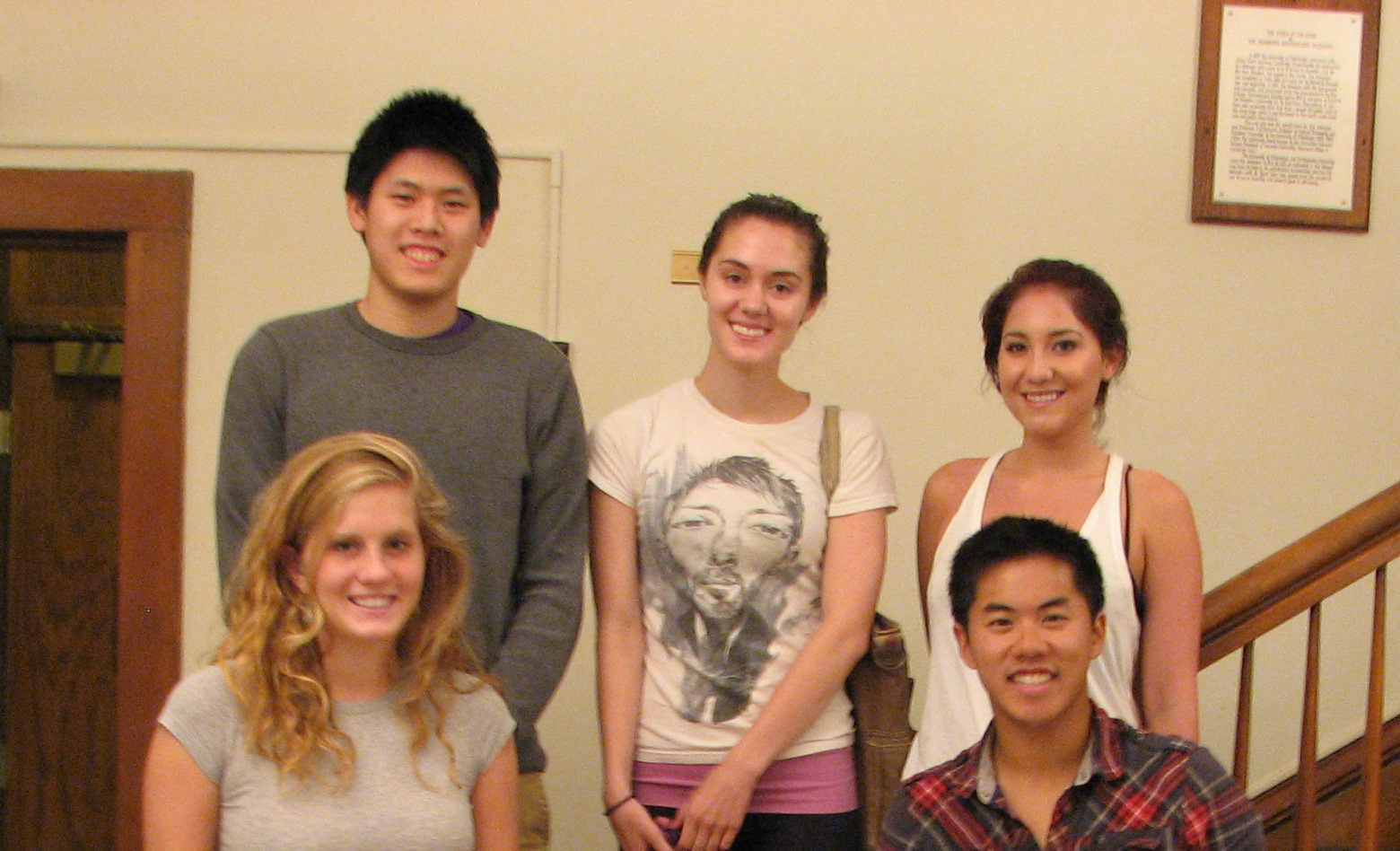

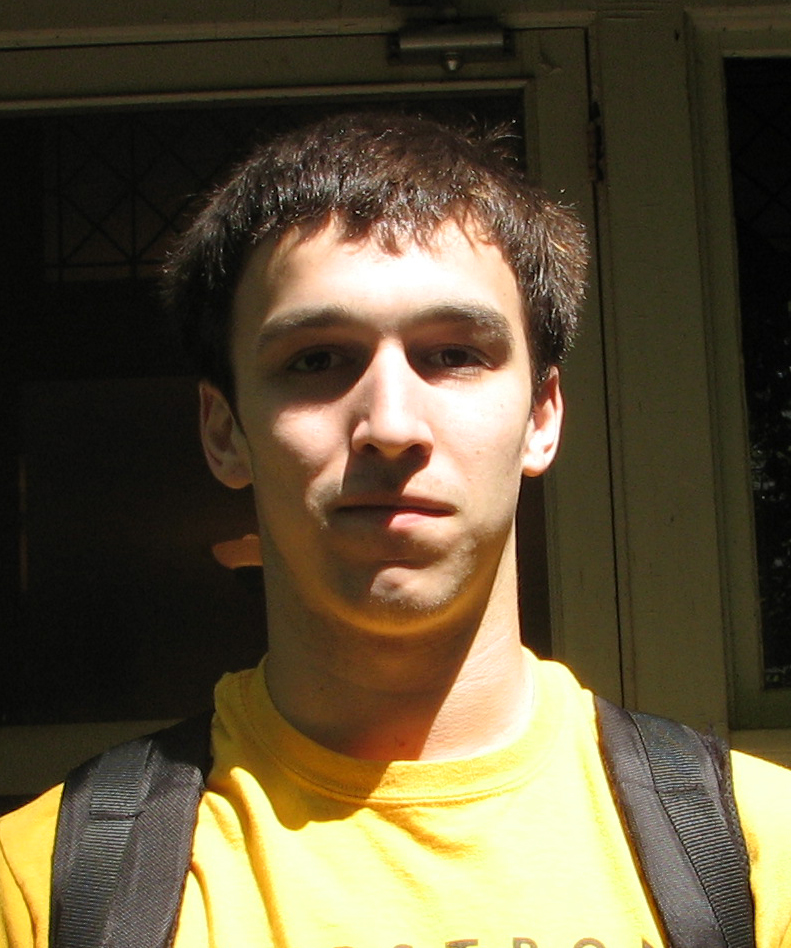 Kevin Broh-Kahn
Kevin Broh-Kahn  Xiaowen Chen
Xiaowen Chen 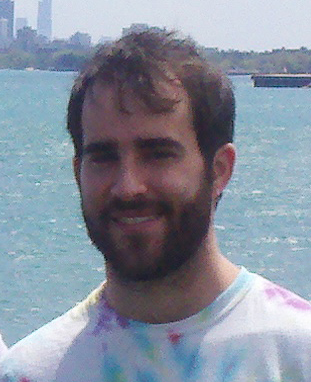 Mitchell Drew
Mitchell Drew 
